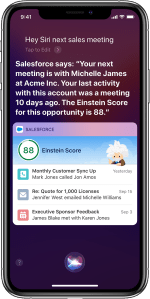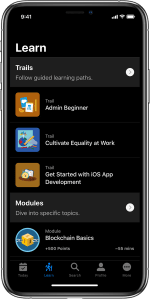Apple today is introducing a new resource for the over 23 million registered members of its developer community, with the launch of a dedicated Apple Developer mobile app. The new app is an expansion on the existing WWDC app for Apple’s Worldwide Developer Conference, which it will now replace. Instead of only including information about the developer event itself, the app will expand to include other relevant resources — like technical and design articles, developer news and updates, videos and more. It also will offer a way for developers to enroll in the Apple Developer program and maintain their membership.
Today, developer information is spread out across Apple’s website, and elsewhere. It even arrives in developers’ inbox in the form of email updates from various product teams. Now it will be available in a single, streamlined mobile app experience.
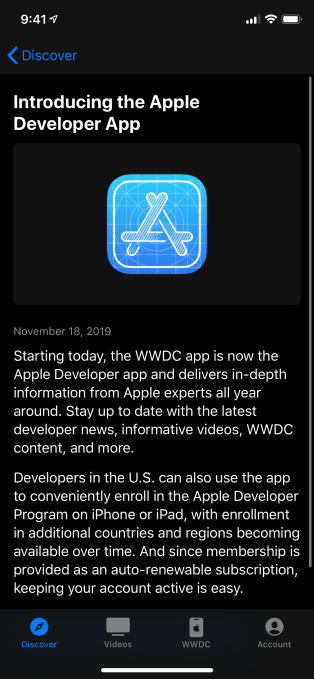
At launch, the Apple Developer app may not have everything you could otherwise find on Apple’s Developer website, but its offerings will grow over time. For example, today you’ll find technical information and more than 600 videos, but you won’t find things like the Apple Developer Forums or a way to connect a local Apple Developer program — like Apple’s App Accelerators, Design Labs or Developer Academies.
Instead, the app’s content is organized across four main sections: Discover, for finding developer information, news and updates; Videos, where you’ll find the videos the WWDC app once hosted; WWDC, for event attendees; and Account, where developers can manage their account and program membership.
Apple’s goal is to use the app to get relevant content in front of developers in a timely fashion and to point them to things they may not even realize exist on the Apple Developer website, or even at Apple, overall. And in some cases, the app will include more mobile-friendly content — like articles that attempt to educate in a more digestible, short-form manner.
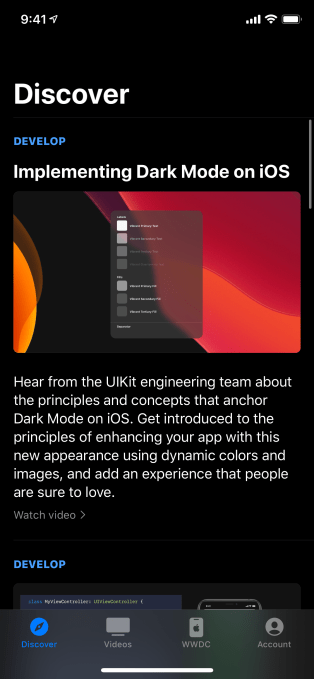
In other words, it may be the same content as found online in technical papers, but packaged in a slightly different way. Later, the app will also expand to address some of the things that Apple hasn’t yet documented — a topic of increasing concern among developers as of late. (One developer even built a website called “No Overview Available” that helps you find out if an Apple API is missing documentation.)
Elsewhere in the app, developers will continue to be able to watch WWDC session videos and review the WWDC schedule, when available. They’ll also be able to sign up for or renew an Apple Developer program membership, then pay for it using Apple Pay or other payment methods.
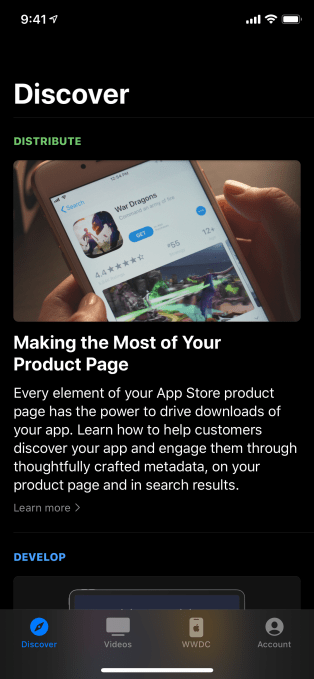
The app’s launch comes at a time when Apple has been focused on growing its international community of developers through investments in local developer academies and accelerators — efforts that have been paying off.
For example, over the past year, the developer community in Indonesia grew its membership by 60% after the opening of two Developer Academy facilities in 2019. In Brazil, the original location for an Apple Developer Academy, the community grew by 50% this year. In India, the location of Apple’s first accelerator lab, the community grew by 45%. Other areas that grew their developer base this year included the U.K. (up 40%), France (30%), Italy (28%) and China (17%).
[gallery ids="1913485,1913484,1913483,1913482,1913478,1913477,1913476,1913481,1913480,1913479,1913475,1913474,1913473,1913472"]
In serving these regions, Apple found that some developers are more inclined to open an app than they are an email — which is another reason it wanted to offer a mobile-optimized, mobile-friendly developer resource. Plus, the company discovered it had developer resources that some people didn’t even know about, like its App Store mini site. By centralizing all this content into an app, it’s more accessible.
The Apple Developer app is being soft-launched today in all worldwide markets, but Apple Developer program membership management tools are U.S.-only for now. Apple considers this a version 1, and aims to get developer feedback as it expands.
The Apple Developer app is available on iOS, including Apple Watch and iMessage.

from Apple – TechCrunch https://ift.tt/2qrUZaF





